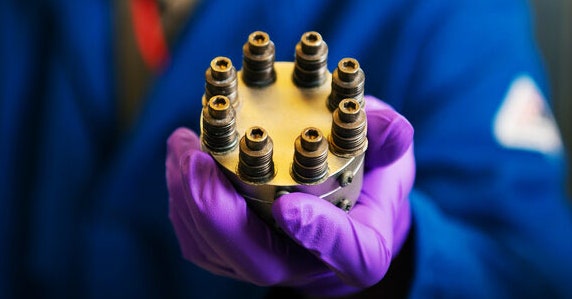
Around this time each year, the Pacific Northwest enjoys a temporary bounty of renewable energy. A torrent of melted snow builds behind the region’s abundant dams just as strong gales blow through the gorges, pushing arrays of wind turbines. But come late summer, the elements relent. During the doldrums, states like Oregon and Washington increasingly rely on other, often dirtier sources of energy—like natural gas and coal produced by their neighbors.
Nature isn’t always on when we need it to be. Which is a problem for most renewables. (The Germans have the word dunkelflaute, or “dark doldrums,” to describe periods when the sun and wind vanish together.) For places like Washington state, which has a goal to reach 100 percent clean energy by 2045, the question is how to fill those seasonal gaps. Maybe California has summer sunshine to spare, or the Midwest has wind, giving them power to trade. That’s tricky, though. There’s the lack of sufficient wires to connect those places, for one thing. And besides, California has the same 2045 deadline to produce zero-carbon energy, which complicates interregional sharing. But there’s another option: storing up energy from those temporarily exuberant winds and melting snowpack to make it last through leaner times.
At the Pacific Northwest National Lab, researchers have come up with one possible solution: a rechargeable battery that preserves power for months by using its own type of freezing and thawing. Most batteries leak power by design. To charge and release energy, they rely on the easy movement of ions through a liquid electrolyte. But sometimes these ions slip through when there’s no demand for power. That’s why the battery of an electric car left sitting around will become depleted over time. The PNNL battery, which was described in Cell Reports Physical Science last month, turns off that leaky faucet by essentially freezing the pipes. It relies on an electrolyte made of molten salt, which becomes liquid when the battery is heated to 180 degrees Celsius (that’s 356 degrees Fahrenheit), allowing ions to pass through it. When it cools off, the salt becomes solid. The ions are trapped, frozen in place, and so is the energy.
Batteries are not typically thought of as an ideal way to store power for weeks or months at a time. For that, grid experts often look to solutions rooted in physics—things like pumping water into elevated reservoirs that can be tapped later, or compressing air into underground caverns—or using excess renewable energy to create a fuel like hydrogen. The conventional wisdom is that batteries are too expensive to build at scale for that purpose. They’re too hard to make, and too packed with valuable minerals, to sit around idly while fully charged. But increasingly, researchers are taking a look at the unresolved chemistry of older, and often cheaper, battery designs.
Molten salt batteries fall into that category. In the 1980s, they were considered for electric cars by automakers like Ford, but lithium-ion batteries soon got a foothold in small electronics, like cell phones. The technology became so dominant in part because it is so easy to recharge—simply a matter of moving ions moving back and forth across the cell. Other types of batteries involve more complicated chemical and physical changes that are harder to reverse. They’re like shattering a vase and then trying to put it back together again.
The freeze-thaw approach brings a few of those challenges, because it means that the materials inside physically change—that is, expand and contract—before each use. “You’re breaking a lot of connections and then trying to reform them,” says Vincent Sprenkle, technical program manager for energy storage at PNNL. The solution is to design a battery that’s remarkably stable—pairing metals like nickel and aluminum that get along nicely, plus adding granules of sulfur to increase the stability. The prototype the researchers made is small—a canister the size of a hockey puck. To activate it, they heated it up in a furnace to 180 degrees Celsius. “You could do it in your oven at home,” says Minyuan Miller Li, a battery scientist at PNNL who led the research. The resulting battery retained more than 90 percent of the energy put into it after three months, the researchers report. (The losses were largely due to ions moving prematurely as the battery gradually heated up.)


